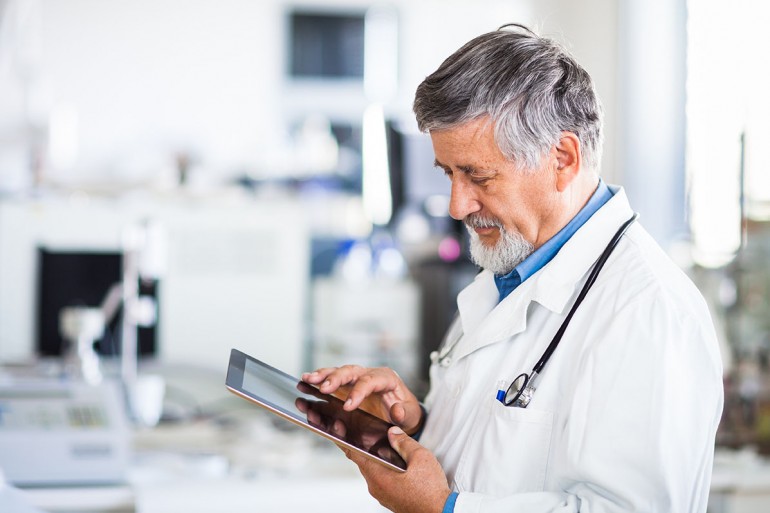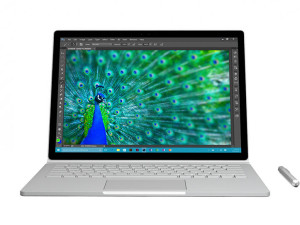
Mobility is poised to be the next great IT paradigm shift, and in fact has already made its impact on many industries. But none promises to be so pervasive as the impact mobility could have on healthcare. Mobile Health (mHealth), in its simplest terms, can be defined as “the delivery of healthcare services via mobile communication devices.” Whether the end-user is a physician or a patient, mHealth technologies are already beginning to disrupt the way healthcare is delivered, and the market for them is only growing.
The health consumer benefits of intelligent healthcare in our current mobile landscape are readily apparent. Fitness tracking software & hardware like MyFitnessPal or the Fitbit Flex smart-sensing wristband help people maintain their fitness goals and monitor chronic illnesses. Apple’s HealthKit for upcoming iOS 8 promises a platform that can assist with secure transmission of health data between doctors and patients. Applications like Mole Detect Pro, an app that diagnoses melanoma with greater accuracy than the average physician, empower patients to have greater control over their health than ever before. The digitally enabled healthcare consumer has access to a plethora of knowledge, insights and diagnostics tools that were previously only accessible through doctor visits – making patients, not doctors, the final authority on value.
But how can mHealth technologies empower providers?
A study from Lux Research forecasts that the mobile health market will be worth $41.8B by 2023 – a promising figure for stakeholders investing in this particular vertical. And while much of that figure takes into account patient-facing mobile technologies, there is a huge portion that will undoubtedly be allotted to technologies geared for internal operations. With effectively implemented mobile strategies, providers can drastically save costs, improve productivity, build a foundation for a long-term marketing solution and, perhaps most importantly, improve the quality of patient care.
According to a recent report from the Ponemon Institute and Imprivata, the average US hospital loses $1.7M/year due to poor communications amongst its members and staff – a cost that amounts to $11 billion nationwide. Something as simple as a server-secured text messaging system could resolve this issue, but the infrastructure is not so straight-forward for organizations that have never implemented such technologies before.
“Technology should eliminate, not create, barriers to delivering effective patient care, which is why clinical and IT staffs need to work together to implement solutions that enable fast, efficient communication to improve provider productivity for better focus on patient care,” says Dr. Sean Kelly, CMO of Imprivata. For mobile communications to deviate from the pager-based interactions of yesteryear and still be HIPAA compliant, hospitals should consider implementing a secure, centralized network for mobile interactions, and ensure the devices used by all staff are enforced with passcodes, encrypted and can be remotely locked or wiped.
In addition to those applications that might be used to improve internal operations, mobile applications that provide some value to patients or prospective patients are an excellent tool for long-term marketing, branding and building patient loyalty. The work we have done with Cleveland Clinic has helped establish the already leading healthcare organization as an agglomerate of hospitals that not only provide top-of-the-line healthcare, but one that serves as a trusted and reliable resource to it communities. There are multiple strategies to be deployed here; an app could serve as a one-stop shop for wellness information, or provide a more niche service for, say, expectant mothers – or patients seeking innovative ways to monitor illnesses like diabetes and heart disease.
And when it comes to treating such types of chronic diseases, mobile technologies are sure to be a game changer. Healthcare has historically been reactive rather than proactive, and when the greatest chance to combat many chronic illnesses and types of cancer lies in prevention, any tools that can be accurately predictive should be embraced. Wearable sensors pull biometric data like heart rate, breathing rate, and sleep cycle that could be mapped and leveraged to determine a patient’s propensity for certain diseases. These types of data-scraping tools can be used to develop a delivery structure where healthcare is far more personalized, which ideally would cascade into an overall increase in the quality of patient care, all while reducing costs and helping practitioners manage their time more effectively.
For the consumers, the options are ubiquitous. The Cleveland Clinic Today App is just one of many free healthcare apps that provide patients with the tools to become more knowledgeable about their health. For providers, the options are revolutionary; but they’re currently facing a curve of adoption that requires quite a bit of strategizing to overcome. HarborDev has had proven success in the healthcare vertical. We’ve designed and developed healthcare applications with a diverse array of features and functionalities, fit for both providers and patients. Get in touch to learn how we can help your business join the mHealth revolution.


